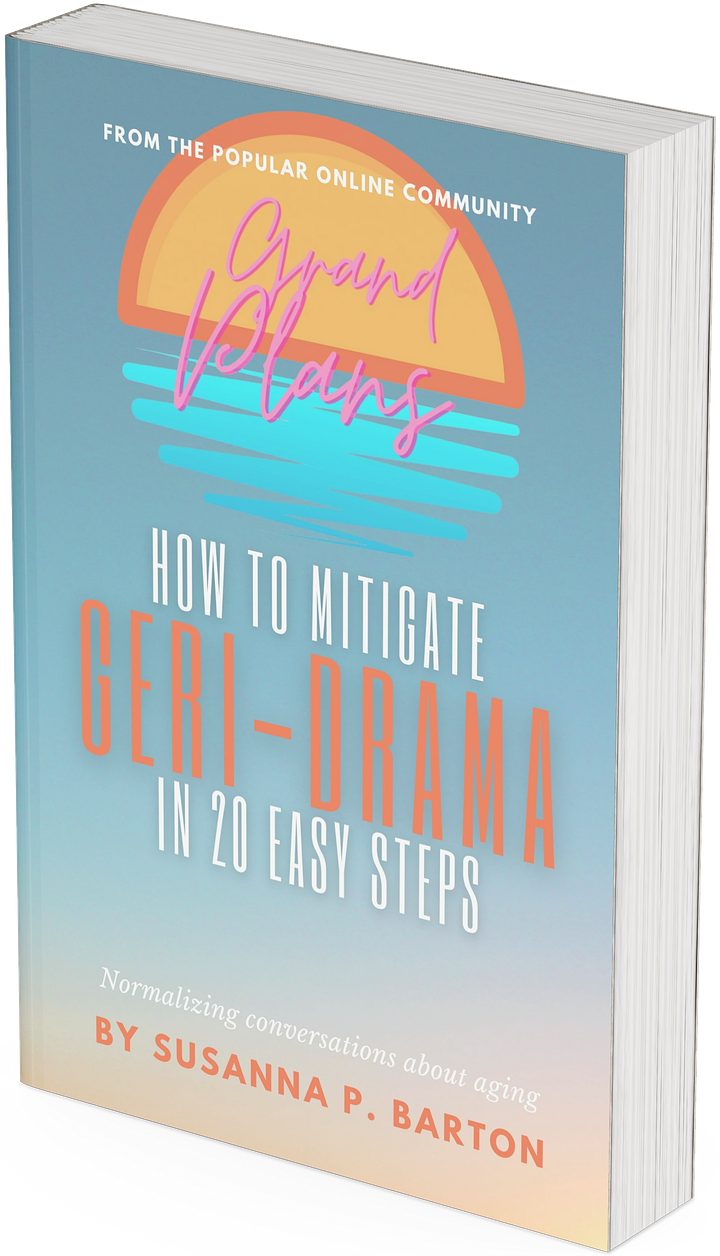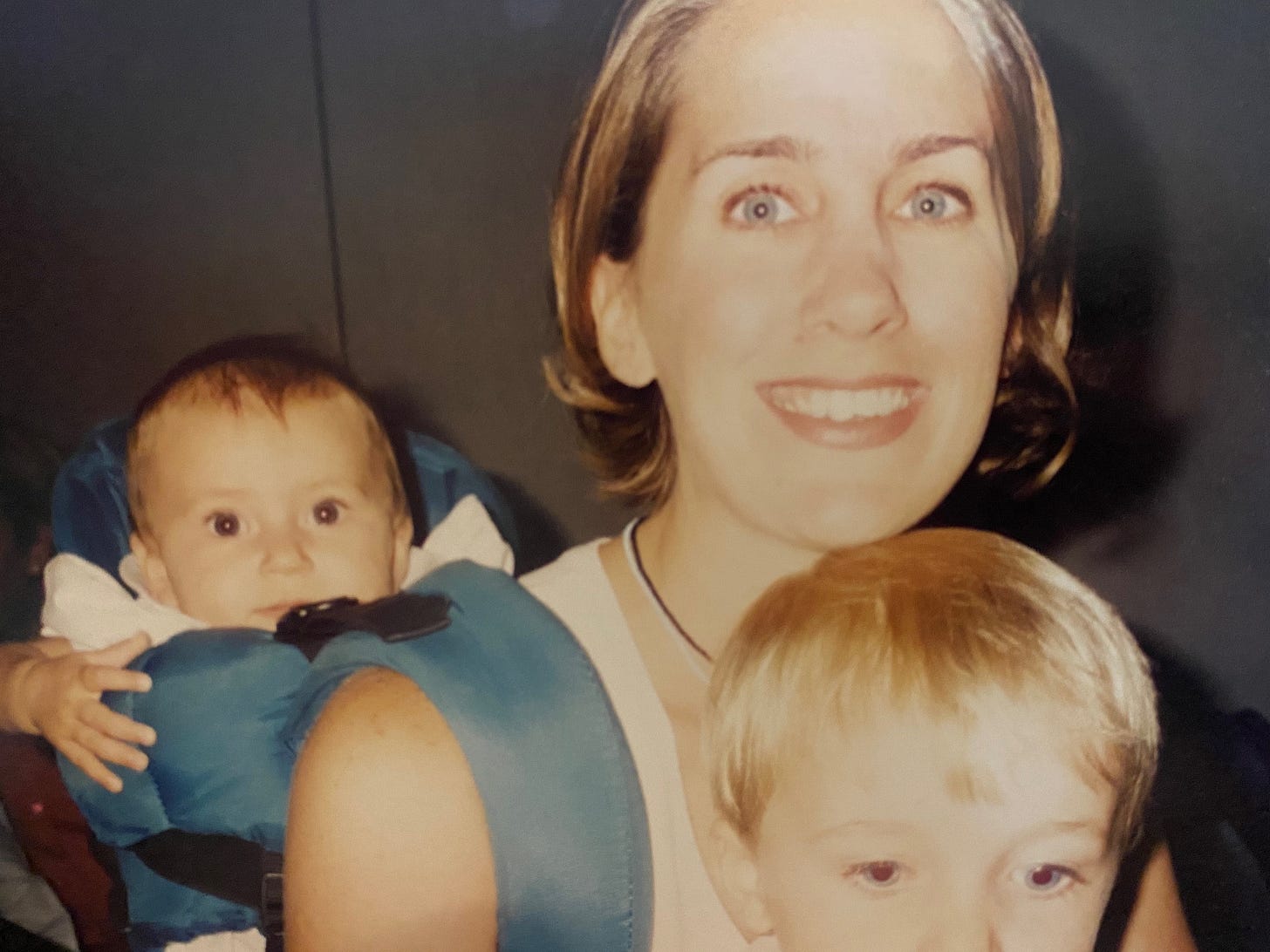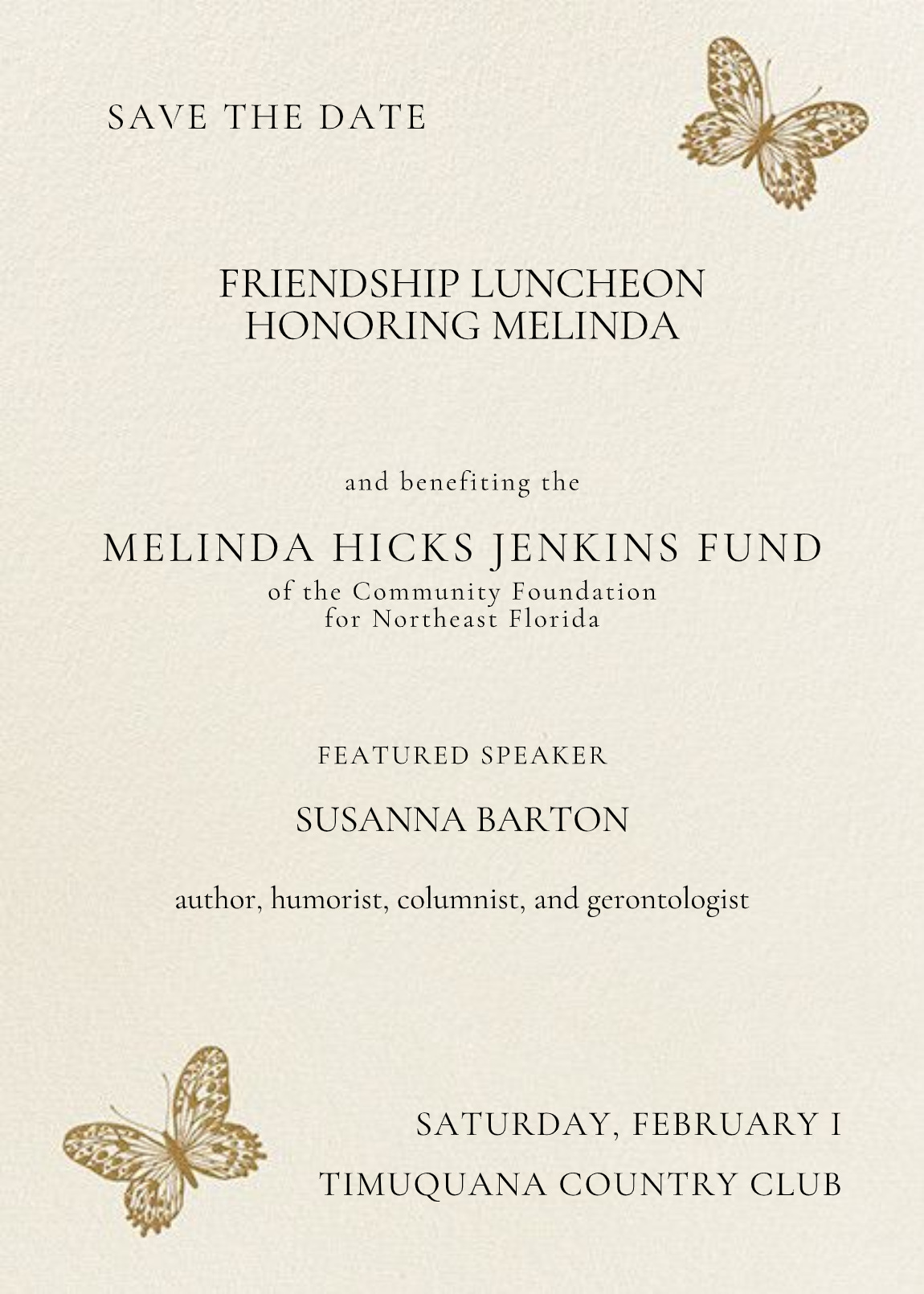Grand Plans: January 16, 2025
A semi-monthly newsletter from Grand Plans designed to normalize and celebrate our glorious geri-destiny through information, stories, real talk conversation, smart planning and shared experience.
Things I’m prattling on about today
When our son, Ben (right), was a week overdue and the doctors were guestimating his size, they predicted he would be 10.2 pounds...plus or minus a pound. OMG, I was horrified. No birth announcement I'd ever seen included anything in the near-twelves, how the holy hell was I going to wordsmith that news? Fortunately, he was delivered by C-section the next day and took the under at 9.2 pounds — still a "big baby," but not THAT big praise the Lord. Our daughter, Marley (left), came into the world 22 months later a tiny brown peanut, barely tipping the scales at 6 pounds. Despite their size difference, both babies required ample oversight, protection and patience as they made their way toward adulthood.
Big or small, all babies need proper guardrails and attention during their earliest moments and fortunately for parents, there are plenty of resources and products to ensure the biggest and littlest yoots thrive in a secure environment. Cribs keep infants and toddlers in a safe space while they slumber. Diapers thwart the code browns. And the bajiollion brands of walkers, playpens, backpacks, swaddlers, harnesses, baby gates, wagons, strollers, carriers and car seats make sure babies of all sizes are safe, contained and comfortable as they grow into productive little people. When it comes to crisis prevention and control, parent of babies and young children have options — and use them at their discretion.
(I think I wore this thing every day at least once for more than two years.)
It is not the same story when we are talking about caregiving for older adults — even though the characters and plotline seem awfully familiar. The same factors — including incontinence, danger, fall risks, diapers, choking hazards, liquids, restraints and rails — that informed our raising of babies are the same parameters of safe, compassionate caregiving for older adults. In the moment, it can feel like a super tangible, totally full-circle, big baby moment. But let's be clear: it isn't. There is one operative word that distinguishes adult parental caregiving for babies/children/minors and caregiving for a parent or older (or disabled) adult: you guessed it, that word is adult. Unlike big babies, adults have rights and the freedom to make their own choices. Ethical elder care emphasizes dignity, respect and a person-centered approach. With senior assistance, the focus isn’t on doing what you as the caregiver believe to be smart or effective, it’s on creating a safe environment without compromising the adult patient's fundamental rights. A loving parent can Pamper-up their cranky, rowdy toddler and put them down for a nap in their crib. It is not the same solution for an older loved one or parent who might benefit from the same treatment but declines, ignores or forgoes it.
Whether we face this situation in our own aging experience or through the caregiving of an older loved one, the nuances of child-like support are something we all will face one day. Let's make sure we know the fundamental differences between baby/minor and adult caregiving. I asked ChatGPT to ponder some of these issues, and here are some of the themes it articulated:
Restraining and Control vs. Protection: Restraints are routine and widely accepted in caring for minors but are ethically and legally restricted in caring for older adults due to their impact on autonomy and dignity.
Caregiving Dependency vs. Support: Caregiving for minors is about guiding growth, while caregiving for older adults is about preserving identity, autonomy and quality of life despite cognitive decline.
Providing a Safe Living Environment, Controlled vs. Adapted Spaces: A safe space for minors prioritizes limiting access to danger, while a safe space for older adults emphasizes removing hazards while allowing freedom and independence.
Ethical Considerations, Best Interest vs. Autonomy: Ethical care for minors is protective and paternalistic, while care for older adults must respect autonomy and personhood despite cognitive limitations.
Societal and Cultural Expectations: Society accepts protective control in caregiving for minors but emphasizes empowerment, dignity, and minimal restriction for older adults.
The bottom line is though some baby/minor and older adult caregiving scenarios may seem very similar, caregiving for an adult is in a league of its own and must be approached as such. Older adults with caregiving needs are not big babies like my 9.2-pounder. They are not babies at all. They are experienced, independent adult humans with the agency and full right to manage their own lives as they wish. As caregivers, our role should be to support and protect that, even when it feels really boo-hiss and wrong. Care for older adults must respect their history, retained abilities and personhood, while care for big babies and minors centers on guidance, safety and development. In both cases, care should be compassionate, thoughtful and legally tailored to individual needs.
And folks, that is why it is so important to make sure we are squared away with advance directives and proper legal documents. Unless we want to be treated like big babies during our Golden Years, it is imperative to get our Grand Plans in order now.
News you can use
Read about ways childcare is much different than senior care in his helpful article.
This piece in Cake unpacks what you can do when older adult loved ones are making decisions that negatively impact their health and safety.
Those who provide caregiving for both children and older adults are called “the sandwich generation.” This University of Michigan study discusses some of the challenges.
“…aging with dignity, for many, is looking less attainable than ever. “We’ve created a world where many millions of people get the opportunity to grow old,” says William Thomas, MD ’86, a geriatrician, author, and public speaker based in Ithaca, New York. “But at the same time we’re draining the dignity and worth from the experience of aging. As a society we have failed to understand that people living with frailty and dementia can have a damn fine life. We think they are a class of zombie and we’ve set up zombie facilities to store them.” Isolating people in this way, he says, reinforces the illusion that “old people can’t give, they can only receive. That’s extremely damaging, not only on a personal level but also on a cultural one.” Read this fascinating and sobering piece on the state of aging with dignity in Harvard magazine.
I am honored and excited to speak at this year’s Friendship Luncheon Honoring Melinda, benefiting the Melinda Hicks Jenkins Fund for the Community Foundation for Northeast Florida. Melinda was a special friend and I look forward to sharing some Grand Plans words at this beautiful event.
Also, this is going to be a fun and important discussion! I love River Garden events, they are always informative.
Shelf life
This is on my bedside table to read in the new year. I got my copy at San Marco Bookstore in Jacksonville, FL, but here is the description on Amazon:
“An “essential” (The New Republic) account of the history of old age in modern America, showing how we created unprecedented security for some and painful uncertainty for others. On farms and in factories, Americans once had little choice but to work until death. As the nation prospered, a new idea was born: the right to a dignified and secure old age. That project has benefited millions, but it remains incomplete—and today it’s under siege.
In Golden Years, historian James Chappel shows how old age first emerged as a distinct stage of life and how it evolved over the last century, shaped by politicians’ choices, activists’ demands, medical advancements, and cultural models from utopian novels to The Golden Girls. Only after World War II did government subsidies and employer pensions allow people to retire en masse. Just one generation later, this model crumbled. Older people streamed back into the workforce, and free-market policymakers pushed the burdens of aging back onto older Americans and their families. We now confront an old age mired in contradictions: ever longer lifespans and spiraling health-care costs, 401(k)s and economic precarity, unprecedented opportunity and often disastrous instability.
As the population of older Americans grows, Golden Years urges us to look to the past to better understand old age today—and how it could be better tomorrow.”


…And, of course, Grand Plans and the Grand Planner can help walk you through all the great ways to talk to your friends and family about your plans for the second half of life!
Some golden gedunk and goods
Get yourself another few copies of Grand Plans: How to Mitigate Geri-Drama in 20 Easy Steps and the Grand Planner for all the people who like getting gifts in your life! Visit www.mygrandplans.com for links to purchase on Amazon.
And… Check out our Grand Plans merch in our Etsy storefront.














